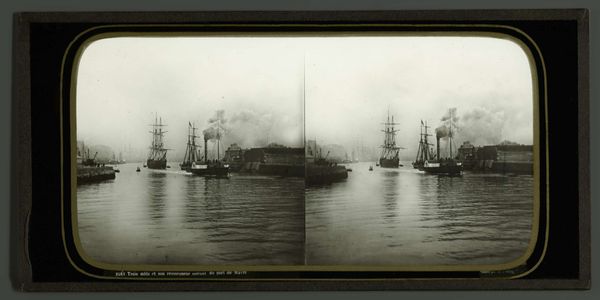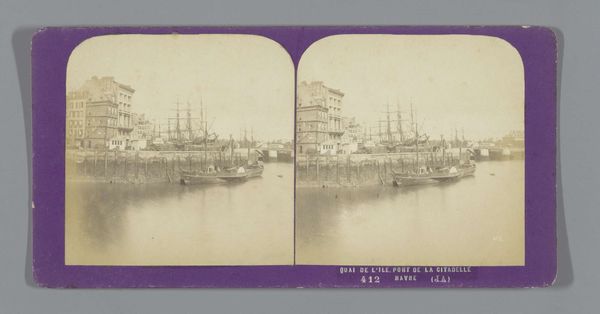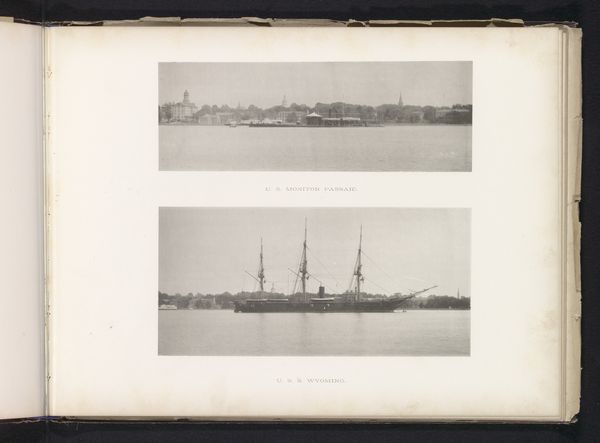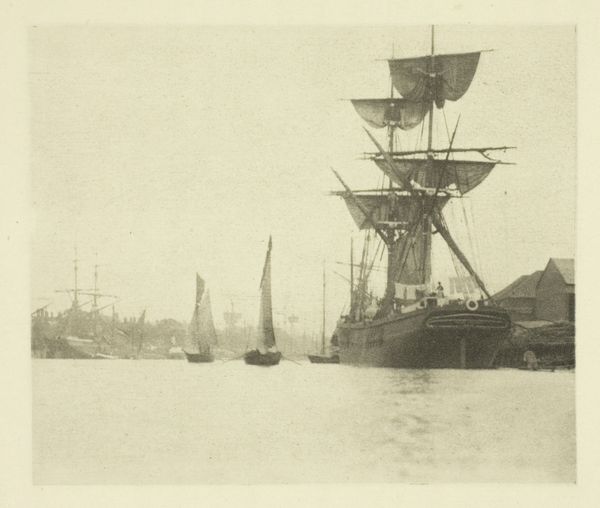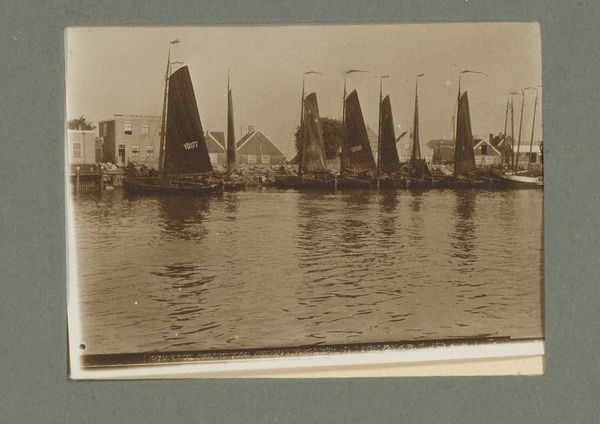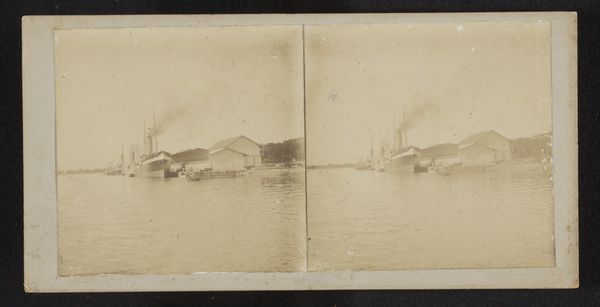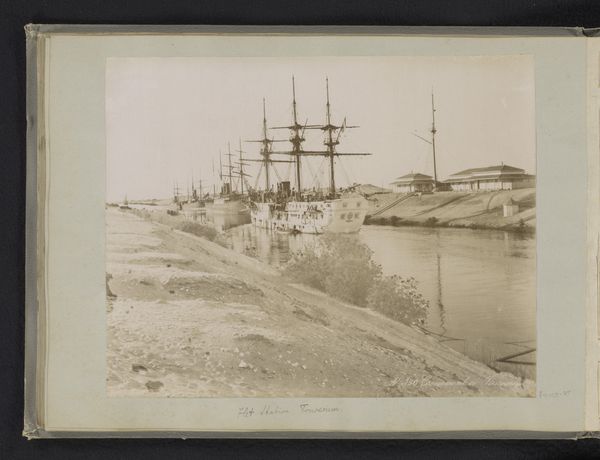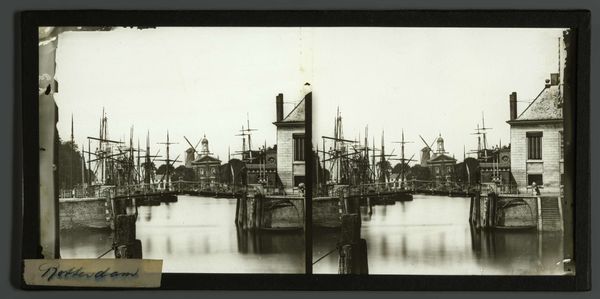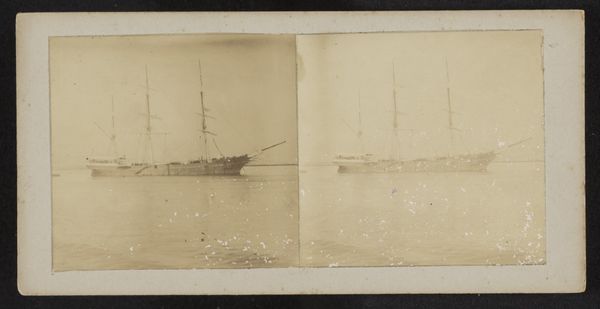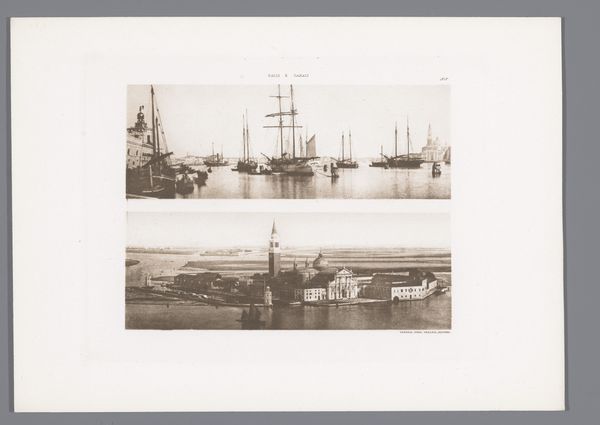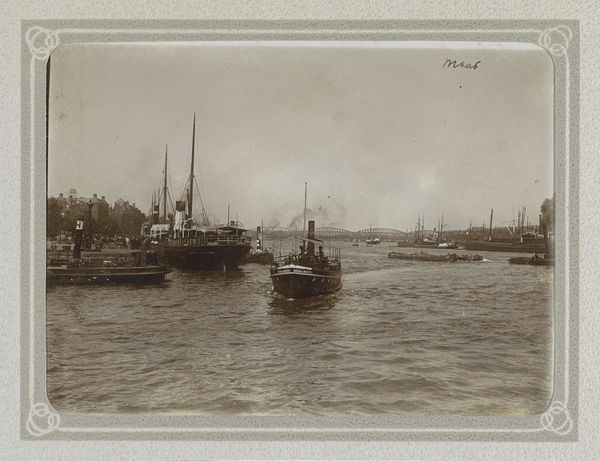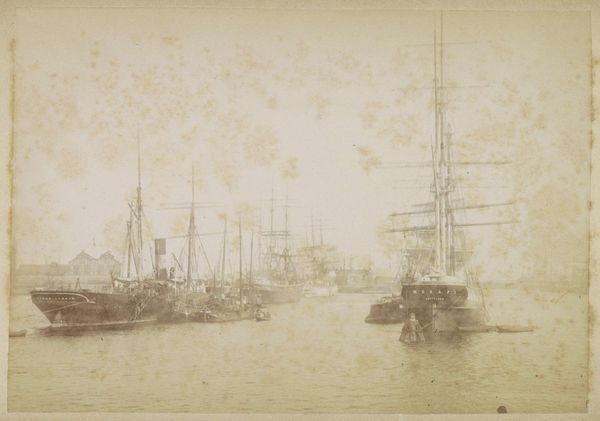
Dimensions: height 84 mm, width 171 mm
Copyright: Rijks Museum: Open Domain
Curator: I find myself drawn to the stark contrasts within this photograph. Before us is a gelatin silver print titled "Zeegezicht in de haven van Le Havre," attributed to Ferrier Père-Fils et Soulier, and it's estimated to have been taken before 1864. Editor: Yes, stark is the word. My first impression is one of industrial power meeting placid acceptance. The tonal range creates such a misty, almost ethereal quality that simultaneously highlights and softens the harsh reality of the scene. The ships stand boldly in this dreamlike atmosphere. Curator: That sense of place really resonates. A port city is always this crossroads—where dreams and realities, opportunities and exploitation, intermingle. Note how the smoke billows, obscuring, almost veiling, the industrial structure. Editor: Exactly, that contrast works compositionally, too. The hard lines of the architecture—the piers, the ship masts—juxtapose beautifully with the fluid forms of the smoke and water. The near-symmetrical mirroring is pleasing. Curator: The presence of those sailing boats in the foreground juxtaposed against the large vessels perhaps hints at the waning era of sail and the rise of steam power and the shifting economic balance that came with industrialization. It speaks to me of change, the inevitability of it. Editor: The light helps to flatten the image somewhat, contributing to that sense of stillness. Although activity is suggested with those smoking stacks, the high contrast still reinforces this pervasive silence and adds to the weight of what this port has "witnessed." Curator: Considering the timeframe, shortly after photography had emerged as a prominent medium, what does it tell us about photographic interpretation, representation? Is this even landscape or history, a document, or something else? What do you see here of their Pictorialism? Editor: Certainly, you can discern traces of that early style in the soft focus and the deliberate composition. In some respects, that softening elevates it to something above mere documentation. It becomes more expressive than simply recording visual information, doesn't it? Curator: Indeed. And considering its place in the cultural memory of Le Havre—how does the visual shorthand function as an encoding of progress? And maybe, destruction. What continuities are echoed down the decades? Editor: It's interesting how our aesthetic preferences change across time, but that the essence, as you're hinting at, persists, isn't it? Form can shift while feeling stays remarkably consistent. Curator: That idea of shifting perspective and inherent feeling lingers with me, prompting me to view this photograph not just as a static image but as an invitation into a dialogue about the complexities of time and place. Editor: And for me, seeing it reminds me that photography, like any other art form, can communicate far more than objective reality. In that way it's enduring, still.
Comments
No comments
Be the first to comment and join the conversation on the ultimate creative platform.
